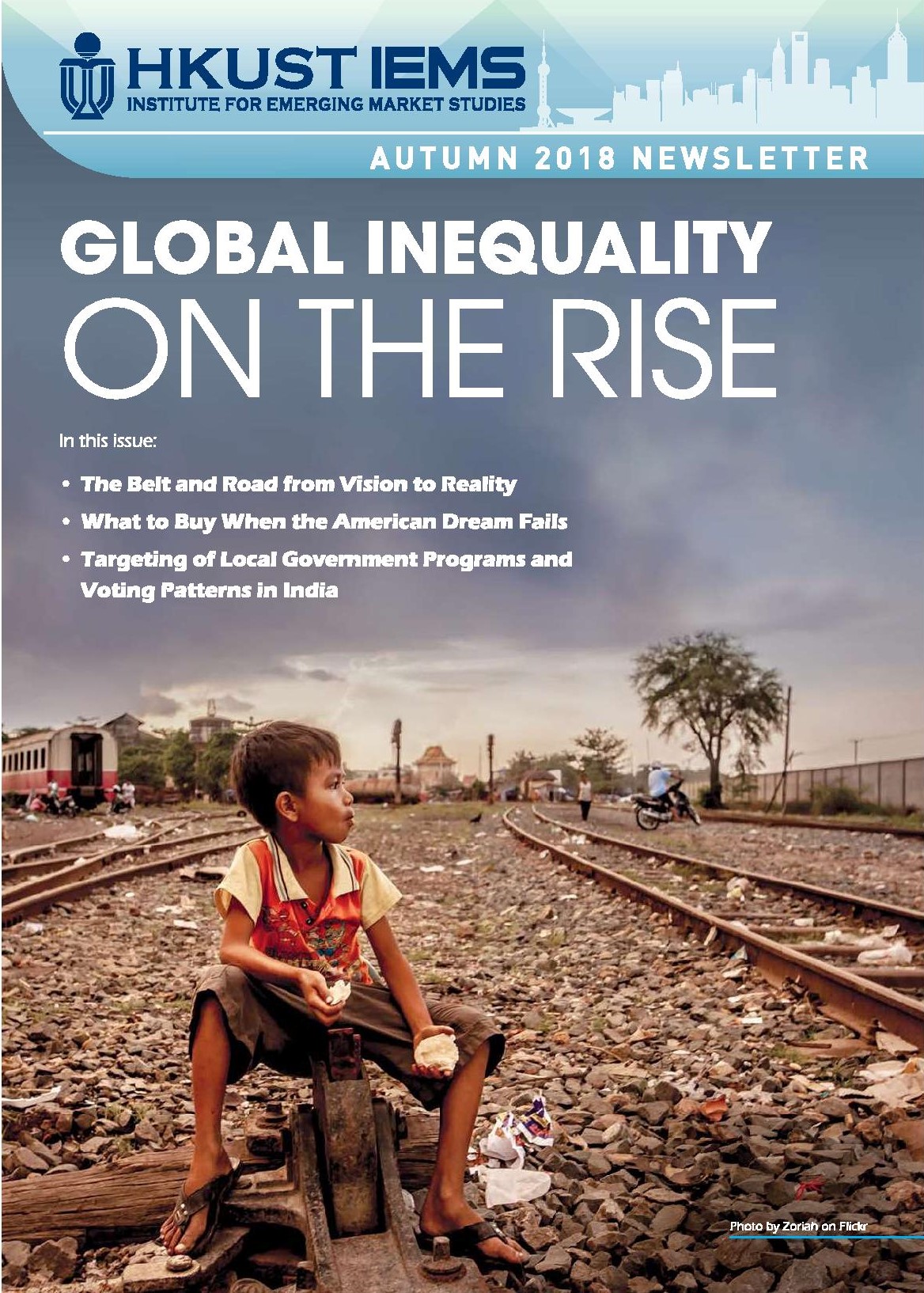IEMS Newsletter Fall 2018
HKUST IEMS Newsletters No. 10
SHARE THIS

China’s Belt and Road Initiative (BRI) will connect China and over 60 countries along the old Silk Road’s land and maritime routes, and will be the main platform for China’s global integration efforts in the foreseeable future. With the support of the HKSAR Central Policy Unit’s Strategic Public Policy Research Funding Scheme, HKUST IEMS is carrying out a multi-year research program on the BRI. Our panel discussions titled “The Belt and Road: From Vision to Reality” this May brought together experts from Hong Kong, China and Russia who discussed the opportunities and challenges that this initiative presents for China and other emerging markets. In an accompanying workshop, academic researchers presented their analysis of specific BRI projects in Indonesia, Pakistan, Russia, Kazakhstan, Ethiopia and Kenya.
Also in May, we co-hosted the first IZA / World Bank / Network for Jobs and Development (NJD) Conference on Jobs and Development in Bogota, Colombia. We also co-organized the 5th Annual Meeting of the International Consortium of China Studies at HKUST campus. In Spring 2018 we organized a full schedule of academic and business seminars on topics such as trade policy and US-Asian trade relations, highlights from World Inequality Report 2018, financing responses to rural road connectivity and moral incentives for debt repayment. The Institute also awarded 6 competitive research grants and welcomed 6 new Faculty Associates.
This Fall, we are looking forward to hosting the launch of the 2019 World Development Report. The report studies how the nature of work is changing as a result of advances in technology. We will also be continuing our Emerging Market Insights Series with a discussion on the Belt and Road Initiative, jointly hosted with EY Hong Kong and EY China. We will also host several academic seminars on topics ranging from enforcing regulation under illicit adaptation based on a study looking at over-fishing of the critically endangered Pacific hake, to industry relatedness and comparative advantage in China.
Get updates from HKUST IEMS









